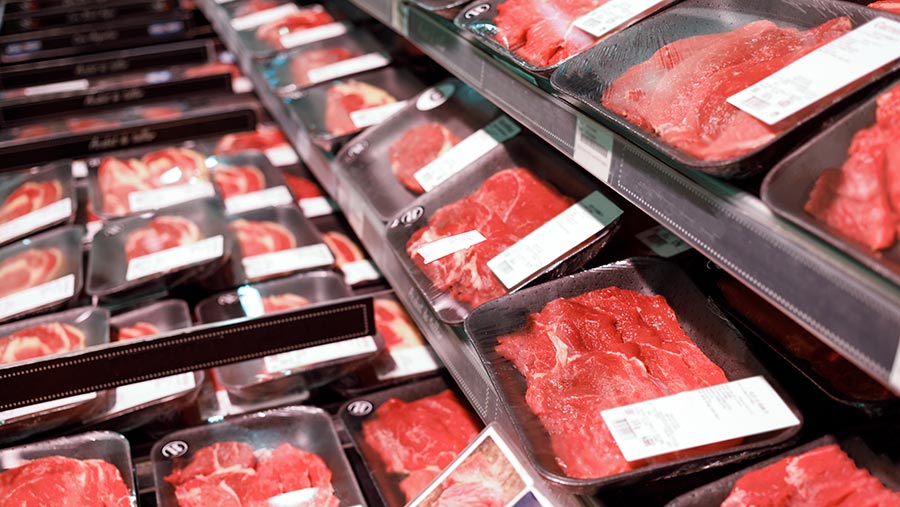Beef and lamb markets well supported into the autumn
 © Jenoche/Adobe Stock
© Jenoche/Adobe Stock A warmer start to September and tighter supplies of stock has helped to strengthen prices for both beef and lamb in recent weeks across the UK.
Analysts say the improved weather should provide a boost to markets with more demand for barbecue cuts after a fairly steady summer.
UK prime cattle slaughterings in August were down 3.9% at 161,000 head compared with the same month last year.
See also: Firm lamb trade forecast after grass-driven yearlings hit £180
Meanwhile, beef and veal production dropped 4% on the year to average 72,000t, according to the latest Defra figures.
Tighter supplies of beef in Ireland are also reportedly limiting import volumes at present.
Hybu Cig Cymru/Meat Promotion Wales (HCC) analysis found the average prices for steers in England and Wales had increased for three consecutive weeks and were 29p/kg higher than year-earlier levels.
HCC insight executive Glesni Phillips said: “Prices in recent days have picked up again as back-to-school demand, along with fine weather, provided some much-needed additional impetus.”
Ms Phillips added that sales volumes at retail in 2023 are higher than recorded before the Covid pandemic in 2019, which is a real positive.
Demand at retail remains below 2021 and 2020 levels, when the pandemic led to the closure of the food-service sectors and caused substantially increased retail sales.
Lamb
GB deadweight lamb prices have remained about 20-30p/kg above last year’s levels throughout August and September.
Quality Meat Scotland (QMS) said prices have been supported by a reduced supply of finished lambs, less imports and rising export volumes.
Iain Macdonald, QMS market intelligence manager, said that despite a slow start to the season, prices in September began at a record level for the time of year at Scottish marts.
“The combination of a rise in export volumes and a fall in import volumes acts to reduce supply in the domestic market. In the first half of this year, this change in trade converted a slight rise in domestic production into a significant reduction in total market supply, down by 11% on 2022 in product weight,” said Mr Macdonald.
“Tight EU supply has supported our export opportunities, with EU sheepmeat production falling 6.5% year on year in the first five months of 2023, according to the EU Commission, while in the year as a whole, EU consumption is set to rebound to its highest level since 2019.
“Although the price of GB lamb carcasses has dipped from the highs reached earlier in the summer at Rungis Market in Paris, prices edged up again during August, and have begun September up slightly on the year,” he added.
